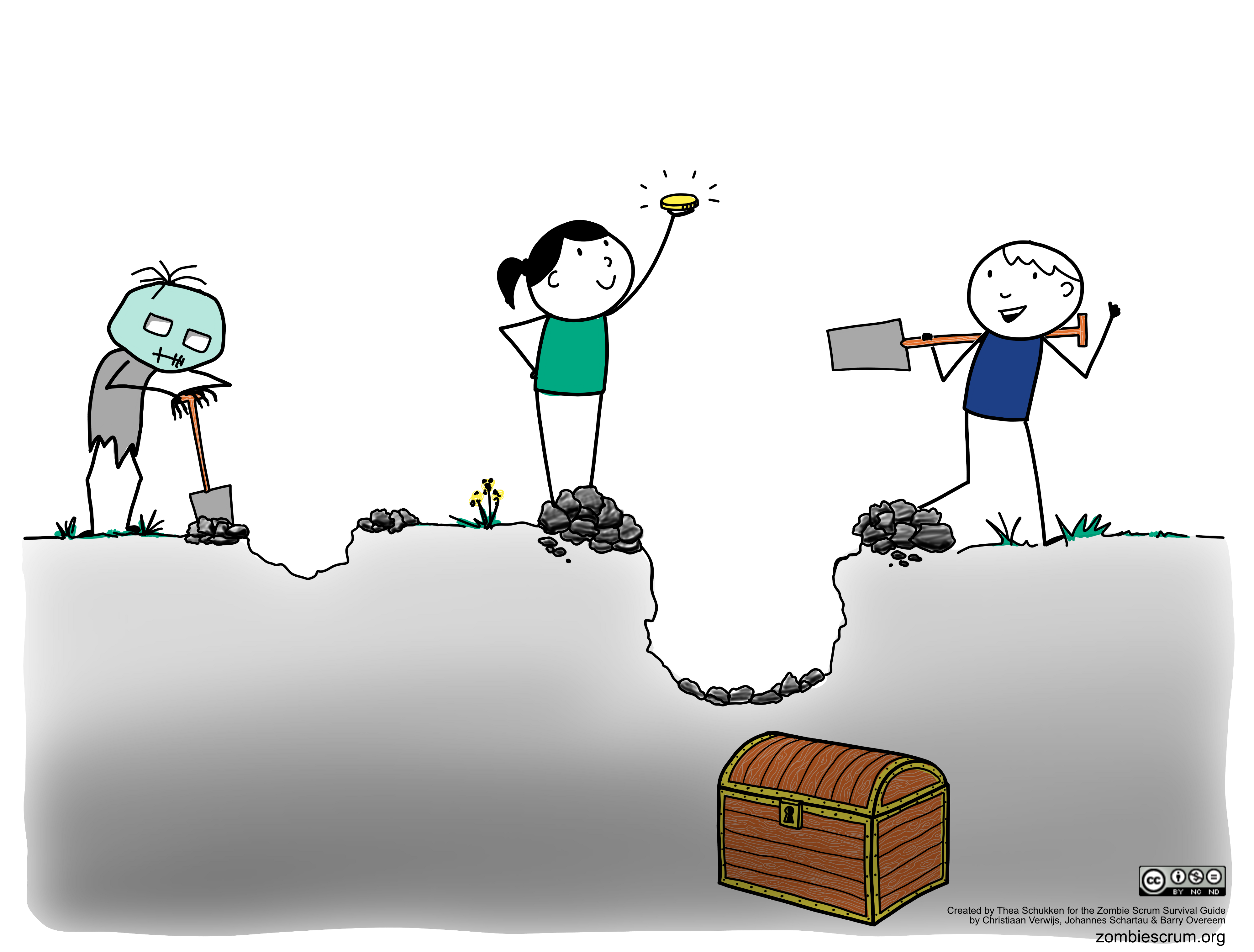
Effectively analyzing and removing impediments is important for deep learning and continuous improvement. Teams have to learn how to ask or write questions that include different perspectives, and to identify specific and actionable solutions. The Liberating Structure “Discovery and Action Dialogue” is ideal for this exploration. It contains a sequence of questions that teams can ask to understand the problem, come up with solutions and specify steps that need to be taken. This experiment is based on the Liberating Structure “Shift & Share”.
Required skill
The specific sequence of questions the team can use makes it low effort. It will help you guide the process.
Impact on survival
This experiment helps people solve the right problems and builds the skill set to analyze them more effectively.

Illustration by Thea Schukken
Steps
To try this experiment, do the following;
In Discovery and Action Dialogue, groups answer the following sequence of questions together:
- How do you know when the problem is present?
- How do you contribute effectively to solving the problem?
- What prevents you from doing this or taking these actions all the time?
- Do you know anybody who is able to frequently solve this problem and overcome barriers? What behaviors or practices made their success possible?
- Do you have any ideas?
- What needs to be done to make it happen? Any volunteers?
- Who else needs to be involved?
Follow these steps for Discovery and Action Dialogue:
- As input for Discovery and Action Dialogue, help your team or teams identify their biggest impediments. Many of the other experiments in this book are helpful here. Either choose the most important topic with one team or have participants from multiple teams form groups around different topics.
- Give the group(s) enough time (at least 30 minutes) to answer the sequence of questions. If it makes sense, groups can deviate from the order or revisit earlier questions when new insights emerge.
- When you run a Discovery and Action Dialogue with multiple teams, add opportunities for teams to share their findings with the whole group and gather feedback. A Liberating Structure like “Shift & Share” is ideal for this.

Our findings
- Encourage the team(s) to spend enough time on the first question. Asking additional questions like “What’s so challenging about this problem?”, “Is there a deeper problem we’re not seeing?” or “What happens when we don’t solve this problem?” will help dig deeper.
- Keep the concept of 15% Solutions in mind when asking what needs to be done to make the solution happen.
- Use a host when the team is struggling to maintain a good pace and flow for answering the questions. The host asks the questions in order and gives everyone the opportunity to speak to each question while keeping track of time.
Looking for more experiments?
Aside from a deep exploration of what causes Zombie Scrum, our book contains over 40 other experiments (like this one) to try with your Scrum team. Each of them is geared towards a particular area where Zombie Scrum often pops up. If you’re looking for more experiments, or if these posts are helpful to you, please consider buying a copy.
